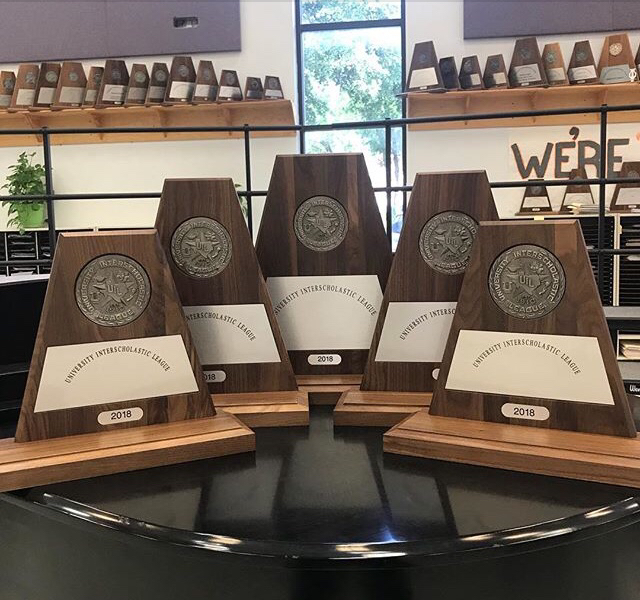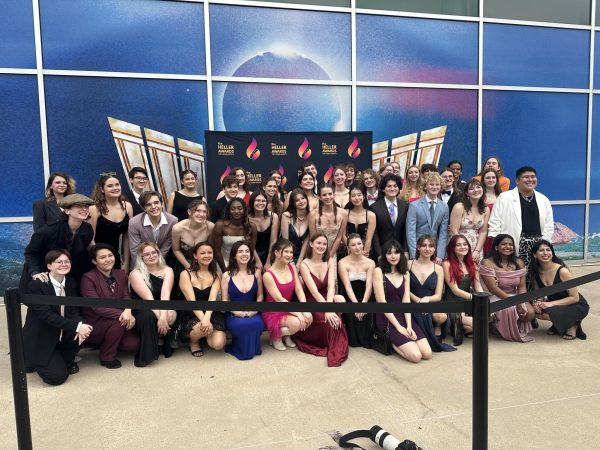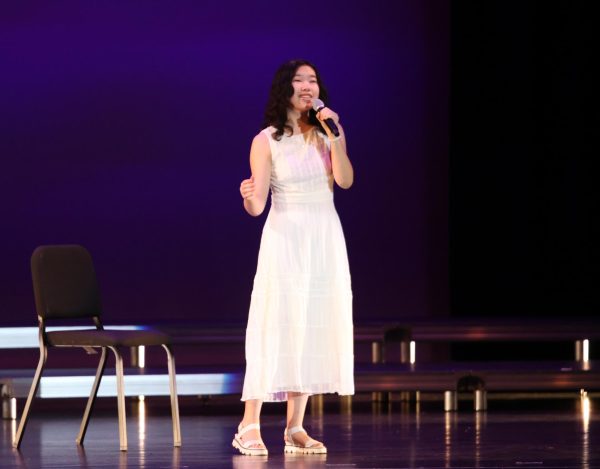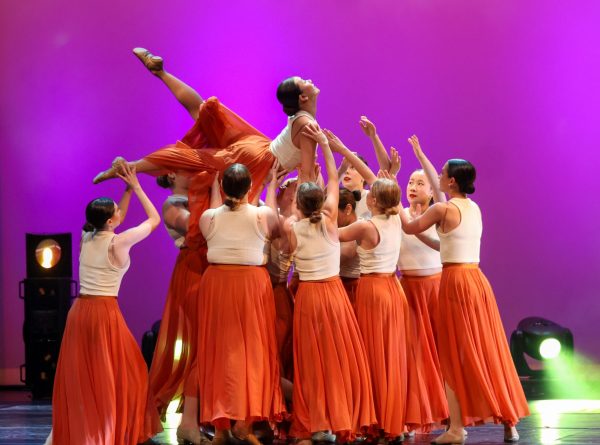Choir Claims Five Sweepstakes Awards at UIL
After months of solid preparation, the choirs traveled to the Pflugerville Fine Arts Center on Thursday, April 19 and Friday, April 20 to compete at the University Interscholastic League (UIL). UIL is an annual event for all high school choirs across Texas and consists of two parts: concert and sight reading. In the concert part of the competition, a choir is evaluated based on their performance of three pieces selected by their director from the UIL Prescribed Music List. After the performance portion of the competition, the choir heads over to the sight reading room, where they are given six minutes to study a random piece of music. During the six-minute period, the choir cannot sing but can only chant or audiate, using their hand signs after the director plays the tonic chord on the piano and points to certain sections of the music that seem difficult. After the six-minute period is up, the choir performs the piece once and is then given a two-minute period to go over any mistakes before performing the piece again.
For directors, one of the trickiest parts of the competition is selecting literature for their choirs to perform in the concert since there are so many options on the prescribed music list. Many thoughts go into this process, including the consideration of pieces that are overperformed at contests as well as the characteristics and musical abilities that define each choir and give color to a specific composition.
“It’s important to choose pieces that fit the students and are engaging for a long period of time,” Head Choir Director Andre Clark said. “Looking at the text and meaning behind it and how the person composing the music is trying to evoke a certain idea really helps this process.”
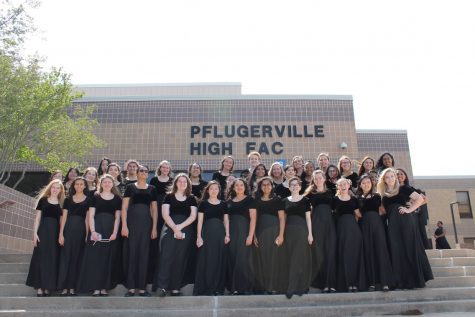
Sometimes, choir directors have to take a risk by choosing pieces that they have never seen performed before at the high school level, the main goal being that this effort will stand out at competition and showcase a choir’s talent.
“All the pieces except one were ‘tried and true’ pieces, ones I had seen other groups do before,” Mr. Clark said. “The one piece that was new to me was Sweetheart of the Sun. Within about three measures of hearing that the first time, I could tell that it was a perfect fit for Chamber, and the challenge was so worth the payoff.”
The feeling of success on Sweetheart of the Sun was paralleled in students.
“Singing that song was one of the most connected moments we’ve had as a choir, and the recordings don’t do the song any justice,” Choir President Alexis Lemus ‘18 said.
Another memorable piece was Tundra, a piece performed by the Varsity Women’s Choir, renowned for its steady pace and slightly haunting quality. The accompaniment of a piano as well as a string quartet composed of orchestra students added to the beauty of the piece.
“Gjeilo [the composer] constructs his harmonies in a way that can really make you feel the song as you sing it, with the interesting dissonance throughout,” soprano soloist Lindsey Adams ‘19 said. “I first discovered Tundra this summer after Ave Generosa was announced as a TMEA piece, and I had performed it twice before with Conspirare Youth Choirs, but not as a soloist. Being able to sing it again with the people who I’m close to at school was a great experience.”
For many students, the sight reading part of the competition was more nerve-racking than the concert part since it involved singing a piece that they had never seen before.
“The sight reading was the hardest part cause we had practiced different pieces by the same composer, but they turned out harder in the sight reading room,” Seren Lind ‘19, a member of Concert Choir, said. “We were also nervous that we couldn’t come together very well.”

In order to lessen students’ stress, choir directors have certain strategies that they use in the sight reading room, besides just chanting and audiating.
“So many judges are listening for how students are interpreting the piece of music, not if you’re just singing correct notes and rhythms,” Mr. Clark said. “The choirs that have the most success in terms of ratings are the ones that have a collection of individuals who can not only sing pitches and rhythms, but can do it in a meaningful way with phrase shapes and seeking out where those condential endings are to make music out of a piece that is nonsense to them. Making the music come alive is extremely important.”
What made this year’s UIL special for students was Mr. Clark’s decision to take a men’s choir to the competition for the first time in years, combining students from both Chamber and Concert Choir to go as a varsity ensemble at UIL. Westwood had stopped taking men’s choirs due to the lack of male students in the choir program, but this year was an exception.
“Our program growth depends on demonstrable success with our guys,” Mr. Clark said. “From the outside looking in at the Westwood program for so long, the one thing that’s been missing is the guys. While they have been such a major component of the success of the Chamber Choir, to have all of the guys be a part of the success is so important. This year, we took 19 guys, and for 14 of them, it was the first time they had read a varsity-level piece. The fact that they were able to succeed shows that they have been prepared for a long period of time, not just this year, but in middle school. The guys that are brand new to choir were able to be a part of that process and learn from others that are more experienced.”
The choirs received the highest division ratings and came home with five sweepstakes awards.
“I’m so incredibly proud of [the] choir program,” Lemus said. “Every single choir that went was a success, and I know that we will keep improving and learning from all our performing experiences.”

